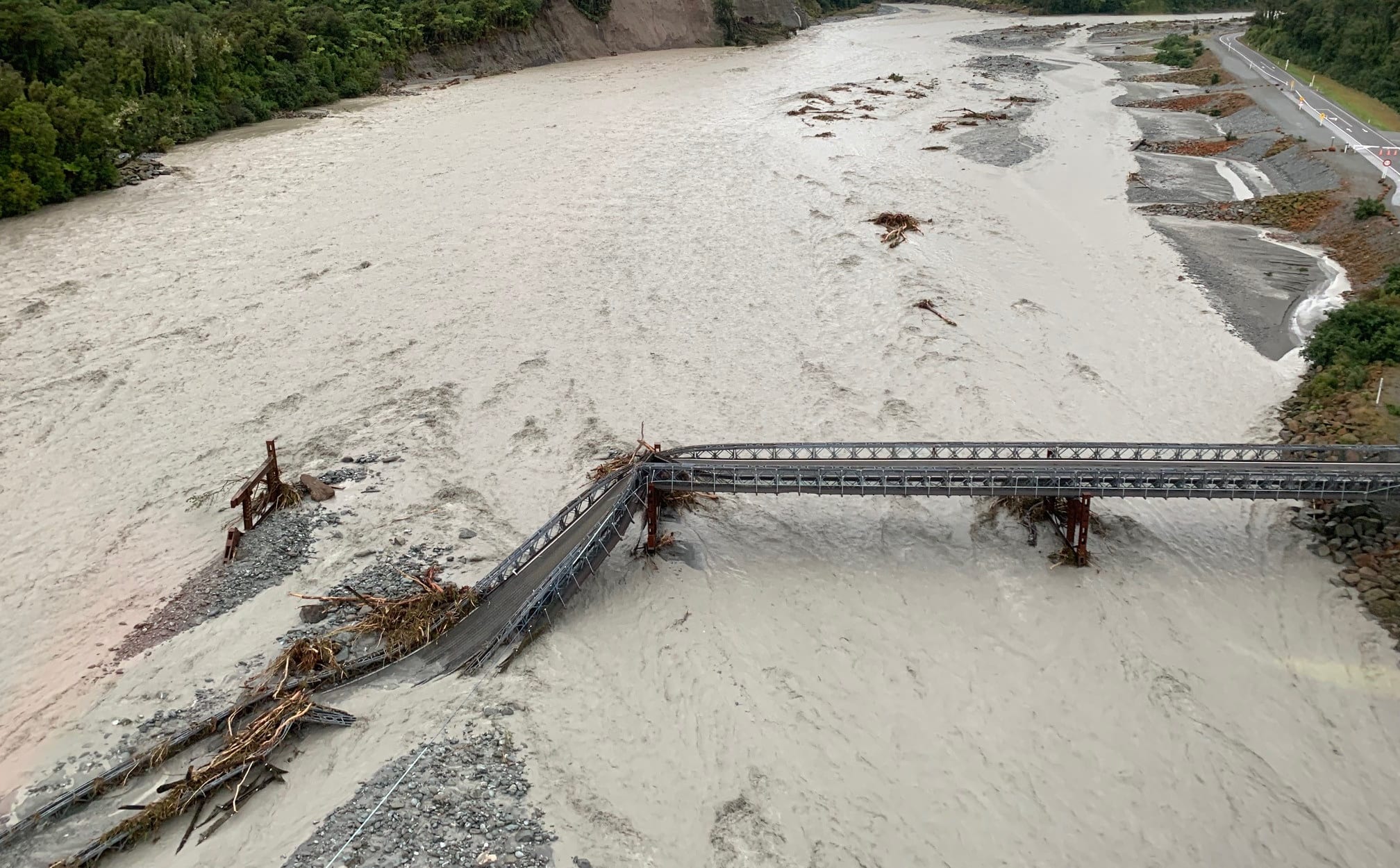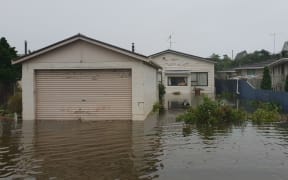West Coast residents say floodwaters have washed away a lifeline for their community after torrential rain battered the coast for two days.

The Waiho Bridge on State Highway 6. Photo: Wayne Costello / DOC
Raging floodwaters that claimed one life also destroyed the Waiho Bridge on State Highway 6, sending twisted metal and concrete into the river as the water surged past.
It's a busy tourist route and the main transport link for Franz Josef to the rest of southern Westland for farmers, businesses and residents.
Eco Rafting Adventures director Kristen Marken said her West Coast business closed its doors early as customers were forced to cancel.
"Once the bridge closed, we had so many cancellations that we've just made the executive decision to close three weeks early for this season," Ms Marken said.
READ MORE: Live updates of West Coast flooding
It's about a 25 minute drive from Fox Glacier to Franz Josef when the bridge is intact.
Without it, motorists are faced with hundreds of extra kilometres as they're forced to drive around the Aoraki/Mt Cook National Park and through Arthur's Pass - a roughly 12 hour journey.
Glacier Country Tourism Group chairperson Ashley Cassin said up to 1 million people travelled around the West Coast each year, calling the bridge a significant lifeline for people in the area.
"A lot of the suppliers come through from Wanaka or Queenstown up to Fox and through to Franz, vice versa," Mr Cassin said.
"You're effectively cutting south Westland in half."
Some businesses in the tourism, hospitality and dairy industries would be hit hard by the closure, Mr Cassin said.
He wouldn't put a price tag on the financial cost of the bridge loss, but said it would be significant.
Helicopter businesses in the area were pitching in to help civil defence and to move supplies around, he said.
Tourism West Coast chief executive Jim Little said businesses in the area would be hit financially, but he hoped it would be short-lived and the bridge wouldn't take long to fix.
"It's a bailey bridge, which were invented during the second World War as a quick fix for bridges that were bombed out in Europe," Mr Little said.
"It's like a giant meccano set, as long as the river piles are ok, it could be up pretty quickly.
Watch raw video of the bridge collapse:
"In the meantime, come and enjoy the West Coast from Franz north and Fox south, it's business as usual."
Phone and internet connections in Fox Glacier are down after the Waiho Bridge washout also took out the Chorus fibre attached to it.
Spark said this meant its cell site at Fox Glacier was down, and the outage was affecting around 90 landline and 40 broadband connections in the area.
Civil Defence says the police and emergency services in Fox Glacier have radio and satellite phones in the case of emergencies.
West Coast farmer Pete Dennehy grazes about 400 beef cattle on land to the south of the Waiho River.
His farm flooded yesterday, as up to 800 millimetres of rain fell in the region within 24 hours.
Mr Dennehy said authorities didn't do enough to maintain the bridge and he doubted it would be a quick fix.
"They wait for things to happen and then there's action. There's no preventative maintenance going on, that's the sad part of it. This was a massive flood, but there were warnings put out about the bridge approach.
"I know that for a fact that they were warned that the approach to the north side of the Waiho bridge needed attention - nothing done."
Without the bridge, he said it would be difficult to transport milk, produce and other supplies up and down the coast.
The West Coast seemed to hit a major disaster every year or two, so prevention needed to be a priority, Mr Dennehy said.
The Westland District Council referred questions about the Waiho Bridge to the Transport Agency.
In 2016, the Transport Agency planned to raise the Waiho River bridge by two metres, spending $1.6 million. But none of the tenders were accepted.
Agency systems manager Pete Connors said the river bed levels reduced so the bridge didn't need to be boosted.
The bridge will be replaced by another bailey - costing about $1 million - because it can be adjusted and adapted to the changing river.
"The bailey in its very essence is a temporary bridge and basically we've had a bailey at this crossing since 1990. The reason we have a bailey there is the volatility of this river, it's probably the South Island's most volatile catchment," Mr Connors said.
The flood was the biggest since 1982 when similar rainfall lashed the coastline, taking out several bridges, he said.
"In terms of the network in this latest flood, it's survived very well."
Mr Connors hoped the bridge will be replaced in the next seven to 10 days.


